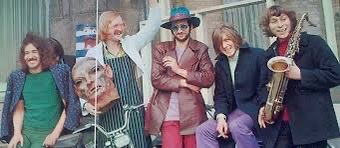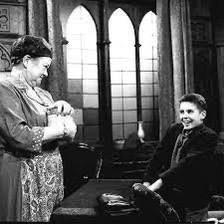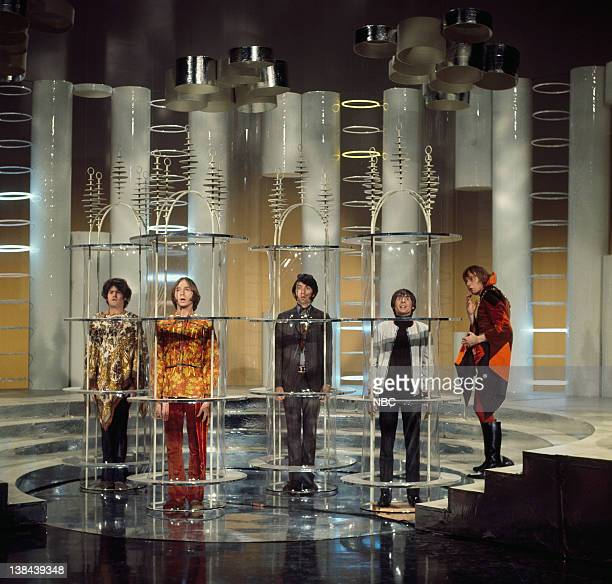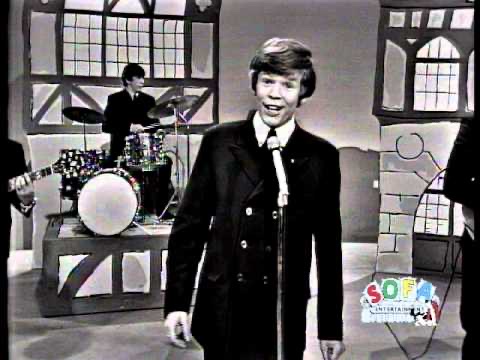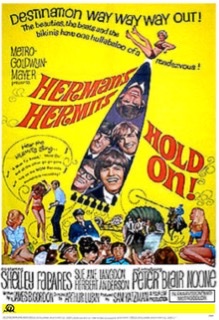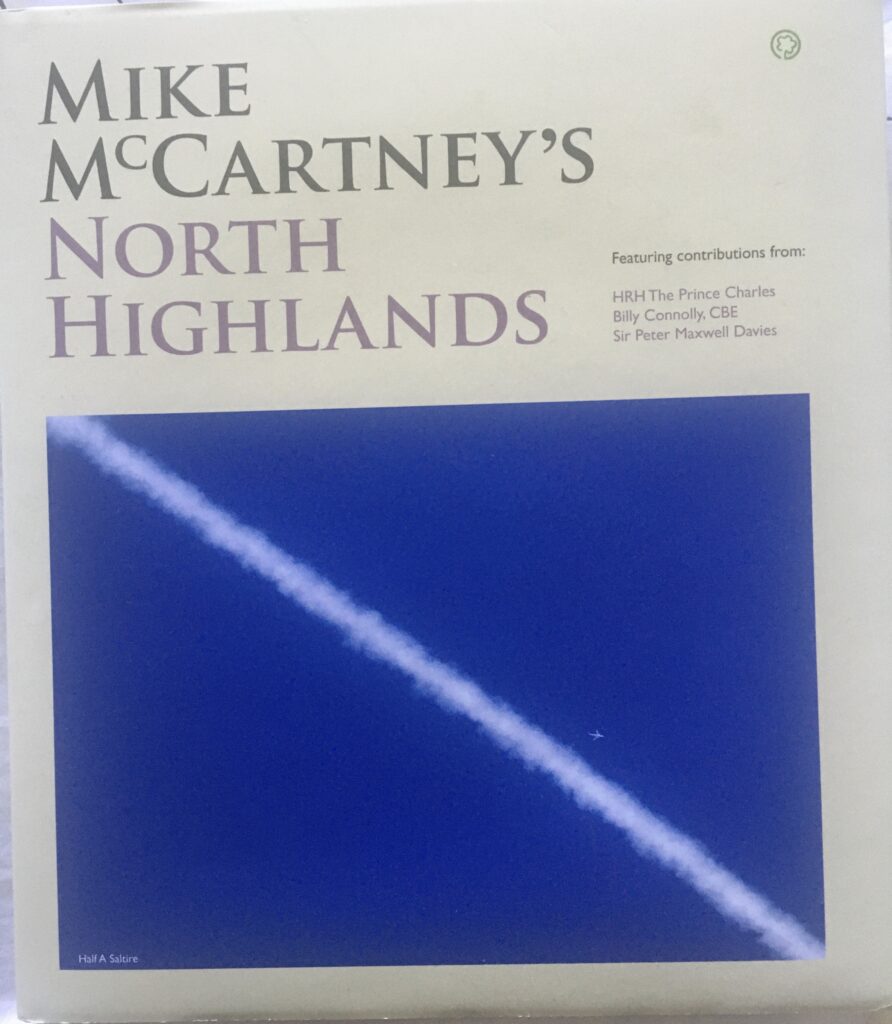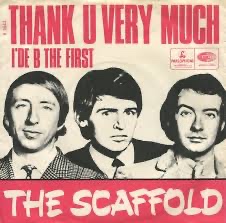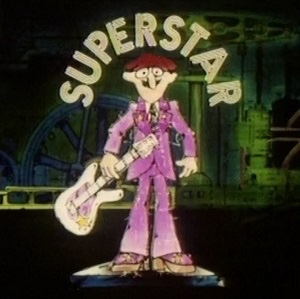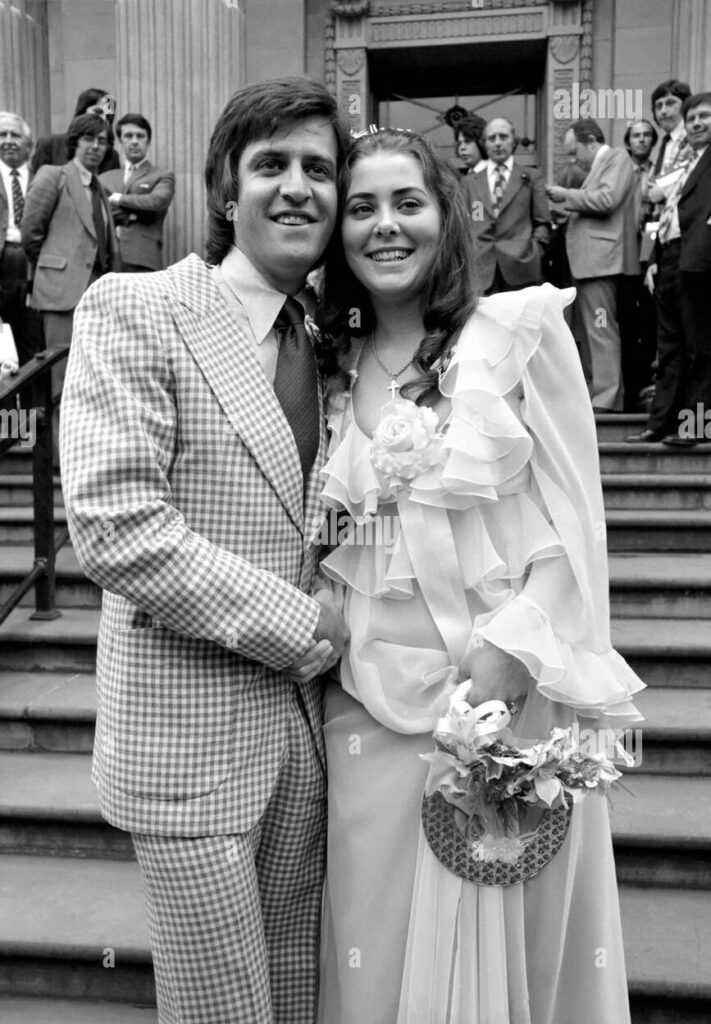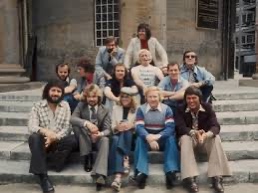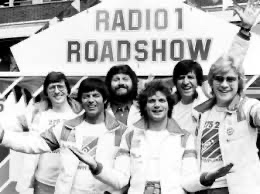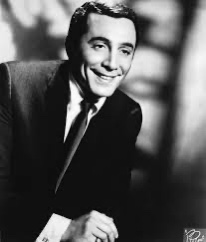
‘Too anarchic, even for the sixties’: John Peel
I can probably sing, if you could call it singing, about six songs without having the words in front of me. One of those songs is Ernie, The Fastest Milkman In The West and three others are by one the greatest, most influential, most connected and, above all, funniest bands to have ever blown a rude noise on a euphonium on national television. Of course, I’m talking about the amazing, irreverent, iconoclastic, inspired Bonzo Dog Doo-Dah Band that, surprisingly, lasted only about five years but left a monster footprint on our musical, comedy and artistic cultural landscape which continues to resonate today. The Bonzos’ tracks I can recite from memory incidentally are Rhinocratic Oaths, Big Shot and We Are Normal (and I can quote endlessly from many more of their back repertoire). Each of those tracks provide the essence of what the Bonzos were about and many other tracks add even more heft to a back catalogue of weirdly inspired genius. As a band they were doing things in the studio that even The Beatles hadn’t thought of. But more on those classics a little later.

The first meeting of the classic line-up of The Bonzo Dog Doo-Dah Band at the New Cross Inn, London in 1965 set the tone for the next five years of inspired and divine anarchy. According to Neil Innes, lead singer and composer Vivian Stanshall walked into the bar wearing a Victorian frock coat, checked Billy Bunter-type trousers, pince-nez glasses, large rubber false ears and carrying a euphonium under his arm. Knowing what we know about The Bonzos now, this seems perfectly in order, even necessary.
After a number of personnel changes the classic Bonzos’ line-up eventually settled on:

Viv Stanshall: Vocals, trumpet, garden hose and many other faintly musical implements

Neil Innes: piano, guitar, vocal

Rodney Slater: Saxophone

‘Legs’ Larry Smith: Drums

Roger Ruskin Spear: Saxophone

Vernon Dudley Bowhay-Nowell: Bass guitar

Sam Spoons: Percussion
Initially they were influenced by the ‘trad jazz’ movement of the 50s which revived 1920s dance music styles but as The Guardian stated in a recent article The Bonzos ‘parodied, pastiched, subverted and perverted every musical genre in their 1960s heyday.’ Nothing and no one were off limits and to describe them to someone who has never heard the band would be virtually impossible. But they brought joy, anarchy, abnormality, and above all, uproarious irreverent humour to a decade that was sometimes a little too up itself for its own good. And even today, over 50 years later, they sound as fresh and iconoclastic as ever.

Their group name changed slightly over time, firstly known as The Bonzo Dog Dada Band, ever so slightly displaying their Art School credentials. Bonzo Dog was a very popular cartoon cartoon character from the 1920s created by cartoonist George Studdy and was an appropriate symbol for the anarchic type of 20s influenced music the band performed. Dada was an artistic movement which grew up after the First World War through European artists disgusted by what they knew of the carnage involved. According to the good people at Wikipedia:
‘..the Dada movement consisted of artists who rejected the logic, reason and aestheticism of modern capitalist society, instead expressing nonsense, irrationality and anti-bourgeois protest in their works’.
Eventually the band dropped the ‘Dada’ of their name mainly because they became tired of having to explain it to people and possibly as it is a tad art-school pretentious and became The Bonzo Dog Doo-Dah Band, ‘doo-dah’ being a word used by Viv Stanshall’s family to mean pretty much anything. But, thankfully, Dada they resolutely remained for the whole of their career, even their solo careers.
It was an incident involving another 20s influenced ‘band’ that led to the development of The Bonzos we now know and love. In 1966 a member of TBDDDB, Bob Kerr, knew the prolific songwriter and producer Geoff Stephens who had written hit songs for The Applejacks, Manfred Mann and Herman’s Hermits amongst many others (See Herman’s Hermits Were HUGE during the 60s. Why?). Stephens had written a 1920s style song, not dissimilar to what The Bonzos were doing at the time called Winchester Cathedral. The song had been recorded by studio musicians under the name The New Vaudeville Band and released to huge success, going top ten in the UK and going to No. 1 in the Billboard chart in the US. As no New Vaudeville Band existed and Stephens was receiving demands for a potentially money-spinning album and tour it was vital he formed a band quickly. As The Bonzos were performing similar songs in their act Bob Kerr was contacted to find out if TBDDDB would like to become TNVB. No they jolly well wouldn’t and an alternative TNVB was cobbled together. It became obvious to The Bonzos, however, that TNVB had nicked the Bonzo ‘look’ lock, stock and barrel right down to the gold lame suits Viv Stanshall wore on stage. This was the turning point for The Bonzos. Did they want to continue as they were being seen as an TNVB without the hits or did they change direction and take their chances? The answer was obvious. Stanshall and Innes began to write songs for the band and the rest became, of course, A History of The Bonzos.

Not The Bonzos
Up until this point the band were working flat out playing sell-out gigs in London pubs and then they were booked into the northern working mens’ club circuit. For me this became the strangest development in their spectacular though short career. They were, apparently, very successful and a number of the band members still speak fondly about this time. But those working men’s clubs were hotbeds of conservatism with a small ‘c’. It’s not even that long ago that women were forbidden from being served at the bar in some, so how the Bonzos with their long hair, outlandish gear, weird songs and their anarchic show went down in the mid-sixties with those bluff northerners is anybody’s guess. Take a look at the audience in any edition of The Wheeltappers and Shunters’ Social Club on YouTube and you get the idea. But it did provide the band with a plethora of material that they gleefully and mischievously integrated into their act.
The Bonzos even made it on to TV in February 1966 for their first televised appearance. Not on the terribly ‘with it’ Late Night Line-Up, Colour Me Pop (although they did appear on this eventually ) or even Ready, Steady Go but that non-threatening bulwark of junior middle-class cosiness, Blue Peter (Here’s Something I Wrote Earlier: Blue Peter v Magpie)! Many tame bands had been featured on BP during the tumultuous years of the early sixties such as Freddie and the Dreamers (Freddie and the Dreamers: The Beatles of Uncool (But Fun!)), Vanity Fair and Pinkerton’s Assorted Colours (name-checked by John in his Bonzos’ intro) and none of them could be accused of frightening the horses or servants. But viewing the footage of this early incarnation of the band just highlights the silliness, the anarchy, the fun and superb musicianship that the Bonzos stood for. But it was all about to change and the slimmed down Bonzos were about to become even more Dada, if that was possible. The old 20s playlist would also be slimmed down and some replaced by songs of such weirdness, randomness and downright brilliance that within the cultural climate of the mid-sixties, they were going to be noticed. And noticed they certainly were, not least by The Beatles.
As is so often the case with stories from this era, a number of different versions continue to float around. How The Bonzos came to the attention of The Beatles in 1967 is still uncertain, not that it really matters, but the machinations of the music industry at this time do interest rather sad people like me. I have already reported that it was Mike McCartney (McGear), brother of Paul, of similarly ubiquitous 60s group The Scaffold (See The Scaffold: The Group Who Put The (Thank) ‘U’ Into Ubiquitous) who had played with The Bonzos at various gigs who had alerted The Beatles while they were developing their Magical Mystery Tour plans (See Magical Mystery Tour: What A Long Strange Trip It Was). Other sources such as Neil Innes suggest that Viv Stanshall hung out with anyone who was anyone in the London music industry at the time and had known Lennon and McCartney. Others claim McCartney had attended some Bonzos’ gigs and knew they were perfect for the strip club scene in MMT. Either way, this was the band’s huge break and on Boxing Day 1967 The Bonzos made their second TV appearance singing and performing Death Cab For Cutie in what became one of the monumental moments in TV history and, at the time, it was perceived to be a massive mis-step by the band who, up till that point, could do no wrong. In some ways the furore that accompanied MMT tended to obscure The Bonzos wonderfully characteristic performance in the film but it did cement a fairly significant place in music history for them and it also led to further adventures with various members of The Beatles over the next few decades.

The Bonzos perform in Magical Mystery Tour
One of those was the creation of their one and only hit, I’m The Urban Spaceman, written by Neil Innes, which soared to no. 5 in the UK hit parade in December 1968. One of the worst kept secrets in pop music at the time was that the producer of this wonderfully infectious psychedelic ditty was a certain Apollo C. Vermouth, better known to his friends and millions of fans as Paul McCartney.
Do Not Adjust Your Set

Possibly the greatest TV Times cover ever.
About the same time as Urban Spaceman was being played to death on Wonderful Radio One, The Bonzos were about to have their biggest showbiz break when they were invited to become the resident band on a new children’s series called Do Not Adjust Your Set. Producer Humphrey Barclay had spotted them and realised they were a perfect fit for a children’s series that was like no other ever broadcast. It starred The Frost Report scriptwriters Terry Jones, Michael Palin and Eric Idle, latterly Terry Gilliam, who would join up with John Cleese and Graham Chapman and, five months after the final DNAYS in May 1969 became Monty Python’s Flying Circus. After that comedy would never be quite the same.




For me DNAYS was a revelation. Suddenly after years of patronising middle-class children’s tea-time TV we were given a programme that didn’t treat children as…well, children. It was a comedy show that just revelled in daftness and included sketches and jokes that were certainly adult oriented, even bikini clad girls! What wasn’t to like? If the comedy was certainly dada-esque The Bonzos just added even more excitement to this heady mix. They didn’t think ‘Oh, will this be suitable for children?‘, they just did it and how brilliant it was.
The first complete series of DNAYS still exists having somehow escaped the cultural vandalism of the sixties when the tapes of most programmes were summarily wiped to be used again and save money. Series two wasn’t so lucky, however, and only one episode survives, but all are available on the wonderful Youtube and have also recently been added to the excellent Britbox roster. Fourteen episodes in total are still available and although a bit grainy and the sound quality is often poor, all are worth checking out to see where so many comedy geniuses, including The Bonzos, cut their comedy teeth.
To be honest, although I absolutely loved DNAYS, the 8 year old me did find The Bonzos a touch scary at first, though hugely fascinating. Not really knowing what to make of them as I hadn’t seen anything like this bunch of weird, hairy weirdos before it took me some time to really get a handle on what they were trying to do, but when I did…. One of my abiding memories, which I can only assume was in one of the wiped series 2 episodes as I haven’t been able to find it, was long-hair and bearded Roger Ruskin Spear playing the sax wearing a one-piece woman’s woollen dress. If that’s not Dada, I don’t know what is. Sadly I haven’t been able to find out what they performed in most of series 2 but their series 1 numbers are demented classics, the first History of the Bonzos. Admittedly most of the songs are from their early incarnation, the utter weirdness of The Doughnut In Grannie’s Greenhouse and Keynsham was a little way down the line. However….Death Cab For Cutie, The Intro And The Outro, The Equestrian Statue, The Sound Of Music (one of my very favourite Bonzos’ tracks) and Love Is A Cylindrical Piano all featured along with more early Bonzos classics such as Hello Mabel, Hunting Tigers Out In Indiah, Ali Baba’s Camel and Monster Mash.
The truncated performance of wonderful The Intro and the Outro (more on this coming up) in one of the last episodes of series 1 took the form of introductions of the band and then the DNAYS stars.
- Michael Palin on garden rake
- Eric Idle on temple bells (Hi Eric!)- see what he did there?
- Terry Jones on toast (That’s kinda groovy Terry!)
- Denise Coffey on tuba (That’s De-nice, Denise)
- David Jason on spoons
Just to hammer home the fact that DNAYS had no truck with treating children as children, as this version of TIATO suddenly peters out, Viv tells the junior teatime audience, ‘Many of you have written in asking me if we’d play the next one. This one is especially for you Mr I. Smith of Salisbury, Rhodesia….’. A topical reference to the apartheid furore and Rhodesia’s withdrawal from the British Commonwealth in 1965.
While their calypso version of Look Out There’s A Monster Coming in episode 2 had the band blacked up like The Black And White Minstrels (which I think was part of the joke) and Limbo dancing. Badly. Of course, you wouldn’t get away with this now but it was The Sixties.
Also appearing on DNAYS was the excellent, and sadly recently departed, Denise Coffey and a certain David Jason in one of his first TV gigs. Some months ago I listened to one of the Desert Island Discs Classics on the superb BBC 4Extra and the subject was David Jason. An absolutely brilliant comedy actor, as he was in DNAYS, I found him to be a tad dull as an interviewee. However, when asked by Kirsty Young why he hadn’t joined Palin, Jones, Idle et al in Monty Python, it was clear this issue was still a running sore. Because he wasn’t asked was the short answer and this clearly still rankles. His take on it was because he wasn’t one of the Oxbridge mafia, and he may have had a point. In my head, though, I could have seen him in Python but would he have had such a glittering career if he had joined them? Of course, we’ll never know but I did find his response interesting and surprising.
Many of the songs performed by the band on DNAYS were from their first album, Gorilla, released in 1967. Their musical output was not exactly prodigious but in the short five years of their existence they produced a range of material that has remained unsurpassed. To know The Bonzos it’s necessary to begin here with Gorilla and work one’s way through the ever-changing inspired weirdness of each release. For the purposes of this little blog I’m going to consider a few of my favourite Bonzos’ creations from each album. These are by no means the only examples of Bonzos’ genius but merely a starting point for anyone wishing to explore their burgeoning back catalogue.
Gorilla (1967)
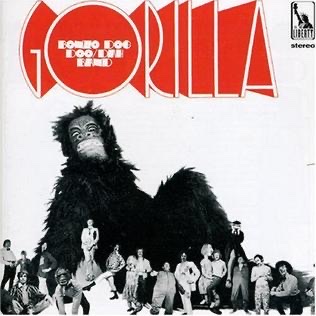
Dedicated to Kong who must have been a great bloke
Viv Stanshall sleeve notes
Of the 15 tracks of very different duration at least 5 are Bonzo classics in my humble view. I’d go as far as saying there isn’t a bad track on the album but a few of them confirmed the band’s status as Dadaists-in-chief.
The Intro And The Outro (Stanshall)
For me one of their most unique, brilliant and distinctive tracks. Stanshall takes the lead as the smarmy MC who introduces his band one by one. Beginning with the members of BDDDB he then moves into the realms of the surreal allowing each band ‘member’ to perform an incredibly cheesy solo on their chosen instrument. The track name- checks some well known media individuals of 1967, many of them long forgotten or unknown by anyone under the age of 55, but also includes a couple of very well known historical figures. Although I’ve known and loved this track for many years there were a few names I was always unfamiliar with and it was only when I began to research them for this article that I found out who they were. For example:
- ‘Garner ‘Ted’ Armstrong on vocals‘: A TV and radio religious evangelist who in later years became embroiled in a number of sex scandals (is there any other type of evangelist?). He was the sort of individual who would probably pass over Viv Stanshall’s radar and fascinate him. The cheesy vocal solo on the track is, for me, one of the best parts of TIATO. I’m not sure which of the Bonzos delivered it but it’s superb!
- ‘..and Franklyn MacCormack on harmonica’: a 1930s-70s American radio announcer
- ‘Great to hear the Rawlinsons on trombone..’ : possibly Stanshall’s first reference to the Rawlinsons of Rawlinson End, his later and one of his last compositions/ monologues from the 70s which fascinated and confused listeners in equal measure. First heard on The John Peel Show and latterly as a film starring Trevor Howard. This was heavy duty post-Bonzos Stanshall which showed his imagination was as fecund as it ever was with the Bonzos.
- ‘Back from his recent operation Dan Druff on harp…’: Only Viv Stanshall knows what this reference was about. It’s just funny.
- ‘What a team, Zebra Kid and Horace Batchelor on percussion…‘: certainly one of the most interesting references and Dada-ist juxtapositions in my view. Zebra Kid was American wrestler Lenny Montana. Now Lenny was very friendly with the local Colombo ‘Family’ in New York and did some favours for them, favours that included ‘enforcing’ as well the odd bit of arson on certain buildings which had maybe decided not to play ball with the Family. He eventually did some time in chokey. Well, a boy’s got to make a living. On his release and due to a variety of circumstances taking Method acting to a new level he got the part of hitman Luca Brasi in Coppola’s masterwork, The Godfather. Interestingly the word ‘Mafia’ is used only once in the film. Although The Godfather was released a while after TIATO, it’s those little connected trivia diamonds in the rough that we love so much here at Genxculture.


Horace Batchelor, on the other hand, couldn’t have been more different to Lenny Montana. The inventor of the football pools ‘Infra-draw system’, he advertised on Radio Luxembourg during the 50s and 60s where he would invite people to write in for his famous gambling system and he would lugubriously read out the address finishing by spelling out the word K-e-y-n-s-h-a-m. writer Neil Innes will have heard this regularly and it’s my guess he just liked the name of Horace Batchelor and became obsessed with it. It led to him writing an album track about Keynsham and even calling the Bonzos’ fourth album ‘Keynsham‘ (‘Tell me more about Keynsham.’) . On the first track of Keynsham we can hear possibly Viv Stanshall imitating the voice of Horace Batchelor.


‘Very appealing Max Jaffa….mmm that’s nice Max’: Strangely we’re not told what Max Jaffa was contributing to the cacophony but Viv certainly liked it. Max Jaffa was, in fact, a violinist who appeared for many years on the BBC Light Programme with his Palm Court Orchestra. Latterly in his career appearing in the then genteel seaside resort of Scarborough. Another easy listening stalwart who receives the ultimate commendation from The Bonzos.
Some political figures of the time also featured in the line-up.
‘Digging General De Gaulle on accordion…really wild General..thank you sir.’: A nicely stereotypical instrument for the famously humourless French premier.
‘And looking very relaxed, Adolf Hitler on vibes..nice’: a most inappropriate feel-good instrument for a tyrant. Now that’s Dada.
‘In the groove with Harold Wilson, violin..’: Labour Prime Minister was an obvious target and his shockingly awful attempt at playing the violin was really quite daring for the time.
The band did attempt to balance out the political jibes by including a well-known Tory minister for some gentle ridicule by having Quintin Hogg (later Lord Hailsham) on ‘piggy grunt’ but boring old Hoggy got wind of this and took the band to court and had the reference banned. This line was replaced, therefore, by a reference to TV naturalist and poor man’s David Attenborough, son of Robert Falcon Scott of the Antarctic, Peter Scott on ‘duck call’.
The band’s admirable iconoclasm also included ‘Princess Anne on sousaphone.’ And even TV ‘royalty’ with unthreatening Irish crooner Val Doonican appearing as himself, ‘Hullo rerr..’.




Rock royalty also get a mention with ‘ Eric Clapton on ukulele..’ and just to prove how well connected The Bonzos were, it really was Eric Clapton playing. Hi Eric! The Bonzos were not only unafraid of a bit of rudeness, they positively encouraged it. Hence we have ‘Hearing from you later Casanova on horn.’
If this track doesn’t hammer home TBDDDB’s Dada credentials, I don’t know what will. A joyously warped work of genius.
Jazz: Delicious Hot, Disgusting Cold
The first track to be recorded when the band began work in the studio on Gorilla. Because studio time was so expensive this was the first track they recorded and they completed it in one take. A savage parody of trad jazz, they even swapped instruments to make the finished track sound as bad as possible. Neil Innes said this was his favourite Bonzos’ recording from their entire output, demonstrating absolutely everything they were about and he’s spot on.
Big Shot
Just to prove The Bonzos could turn their hands to any genre, Big Shot is their brilliant attempt at Film Noir. Once again, more of a monologue delivered by Stanshall which tells the story of Bachelor Johnny Cool, ..occupation Big Shot, occupation at the moment, just having fun…‘ Spoken over a wonderfully low-key jazzy New York musical backdrop, Johnny meets ‘ big bountiful babe‘, Hotsy. She had the hottest lips since Hiroshima, I had to stand back for fear of being burned.
It also includes the immortal line, which still describes the impact of The Bonzos on British culture, ‘Baby you’re so far ahead…it’s beautiful!’
The dialogue becomes more and more rudely surreal (..normally I pack a rod in pyjamas…I carry nothing but the scars from Normandy Beach..) but after the linguistic gymnastics of their conversation Viv Stanshall just can’t resist the temptation of finishing on a really bad gag. ‘A punk stopped me on the streets. Hey, you got a light, Mac? No, but I’ve got a dark brown overcoat…’
The Sound Of Music
‘ That day I saw something that really moved me…it was…The Sound Of Music.’
For me this track sums up everything I love The Bonzos for. There are, of course, many other tracks that we will come to presently, but if I had to select just one Bonzos’ track I’d take to a desert island if I could only take one, it would have to be this one.
To put it into context, The Sound of Music was a film and stage musical by Rodgers and Hammerstein that, since the film’s release in 1965, had taken on an almost religious status. To my knowledge, few people criticised the whole production and with the saintly and British Julie Andrews in tow, it could only be discussed in reverential tones. My mum went to see it 7 times on its release. The film possessed a similar standing to that of the British Royal family. Irrespective of what you thought of them, criticism was not allowed in public. But The Bonzos were one of the first acts, to my knowledge, to brazenly and iconoclastically take the piss out of it, as well as the Royal family (..Princess Anne on sousaphone..), and the results were glorious! And you can almost hear what great fun they were having ripping this dirge of a musical apart, all in 1 minute and 28 seconds.
A Bonzos tour-de-force.
The Doughnut In Grannie’s Greenhouse (1968)

Described by one critic as ‘..recklessly diverse and outrageous material..’ this album was thought by many to be The Bonzos‘ crowning achievement, The Doughnut In Grannie’s Greenhouse was the band’s second LP and referred to a slang expression for an outside toilet. One report claims it was first heard by the band after Michael Palin told a joke in which this expression was used. Any reference to a toilet during the buttoned-up 60s was seen as being deeply offensive. You can almost hear The Bonzos sniggering up their sleeves like naughty schoolboys.
Of the 12 tracks that make up the album, many are Bonzos’ classics. My own view on the Bonzos’ albums is that every single one included classic Bonzos’ tracks but TDIGG maybe includes more than any other.
We Are Normal
For me, a heavy duty Bonzos’ track that gets better with every play, and I’ve been listening to it for nearly 50 years. Clearly they were experimenting with what could be included on a Dada album and We Are Normal is about as Dada as is possible. To an aural backdrop of experimental noises we hear short-lived Bonzos’ member, American Joel Druckman interviewing people in the street as to whether they thought they were ‘normal.’ As he’s doing this Viv Stanshall hovers around in his underwear wearing a rabbit head. Some of the things the interviewees say stick in the memory. (..short, back and sides..and they are very nice people..). Strangely, no one seems that keen to declare themselves ‘normal’, not even with Viv hopping around as a rabbit (..He’s got a head on him like a rabbit..).
The ‘noises’ build and build and suddenly the band crashes in with an instrumental track played at break-neck speed. Voices come in saying ‘We are normal and we want our freedom (a reference to Peter Brooke‘s play of Marat/Sade..very intellectual!) but it’s quickly brought back to Bonzo HQ when they state ‘..we are normal and we dig Bert Weedon..’. Bert Weedon being a popular 50s and 60s guitarist of very soft rock whose LPs graced many a 60s radiogram, including my own parents. Lovely use of the fashionable 60s verb ‘dig’ meaning to like or revere.
I’m aware that to describe a track like ‘We Are Normal’ is maybe a pointless exercise as this track just demands to be heard but it’s The Bonzos at their most iconoclastic, provocative, experimental and, not forgetting, their funniest. Very much a product of its time but it has lost none of it’s weird, cutting-edge power.
Unique.
Rhinocratic Oaths
Yet another bizarre classic which takes the form of a series of short spoken vignettes, all with a strange, but unresolved, conclusion. To a jaunty, jazzy musical backdrop Viv Stanshall relates the story of four very different characters and each verse creates its own very strange story in a few lines.
Who could not instantly be gripped when one verse begins:
‘Mrs Betty Pench was playing the trombone when she heard a knock at the door. I wonder who that is at 11 o’clock in the morning she thought.…but instead of the turbanned ruffian she expected there was a very nice young man.
The characteristic use of ‘turbanned ruffian‘ makes this yet another hilarious Bonzos’ pricking of middle-class pomposity and narrow-mindedness. A favourite BDDDB theme.
‘With a geranium behind each ear and his face painted with gay cabalistic symbols, six foot eight, seventeen stone Sergeant Geoff Bull looked jolly convincing as he sweated and grunted through a vigorous twist routine at the Fraga Go-Go Beirkeller.’
Themes of police harassment and gay liberation sets this particular verse way ahead of its time.
‘Excuse me sir, but I have reason to believe you turn me on…’
The Big Lebowski of Bonzos’ tracks where each line is eminently quotable. The last line of the track being one I have used regularly for over 50 years.
‘Sometimes you just can’t win….’
My Pink Half Of The Drainpipe
Another Stanshall tour-de-force where he takes his vocal delivery to a new level. An examination of class and possibly boredom between neighbours, the song takes is into yet another canyon of Viv Stanshall’s crazed but brilliant mind.
Postcard
A wistful homage to the misery of the Great British Seaside Holiday (Rained yesterday so we stayed indoors…..Bored with bingo, we went for a swim. Fat sea cows with gorgonzola skin.) Neil Innes does his best Antony Newley impression to give it a bit of English authenticity while Viv chips in with some of the most dull comments possible on a seaside postcard (The food’s alright, I’m OK, hope you are the same). References to penny arcades, bingo, plimsolls and a cold sea all create a feeling of stultifying boredom. Can’t help but think there’s an element of Sergeant Pepper and Lennon’s healthy cynicism in this song.
Keynsham
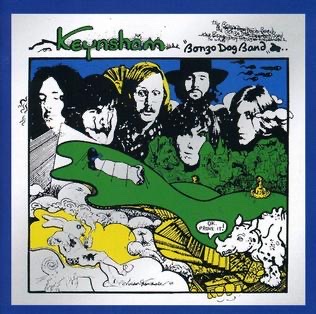
Between TDIGG and Keynsham The Bonzos released an album called Tadpoles which was essentially a compilation of the tracks they performed on Do Not Adjust Your Set. Keynsham was made up of new material which some critics felt was lacking the invention, weirdness and surreal humour of theri first two albums. Certainly things were happening in the band which were causing strain amongst the members, which is probably true of most bands after 4-5 years but amongst the problems was poor management. That said Keynsham included some bangers and allowed Neil Innes to explore his Horace Batchelor obsession a little further.
Keynsham
An Innes written melodic homage to one of his favourite 60s characters, Football Pools maestro, Horace Batchelor (There are no coincidences, but sometimes the pattern is more obvious.) And if that doesn’t explain Horace Batchelor’s Infra-Draw Method, then I don’t know what will. Not forgetting Stanshall’s wistful final line, ‘Keynsham. Tell me more about Keynsham..‘
Sport: The Odd Boy
Clearly a reflection of Viv Stanshall’s miserable time at school, this almost baroque track takes the form of a school song with the refrain ‘Sport, sport, masculine sport equips a young man for society.’ Although very funny it is one of the more introspective songs in the Bonzos’ anthology. It includes a typical Bonzos’ character in the form of ‘The ‘odd’ boy’s’ mother writing to the PE teacher requesting Stephen be excused from games as ‘..he’s a little delicate and still feels a bit snotty…hoping you will understand, signed Nelly Maynard (Mrs).’
Mr Slater’s Parrot
Sax player Rodney Slater had a parrot and Viv Stanshall wrote a song for it. What’s not to like?
We hope to hear him swear
We love to hear him squeak
We like to see him biting fingers in his horny beak
But all Mr Slater’s parrot does is say ‘Hello‘.
The song was even used in a TV ad during the 90s for Cadbury’s Mini Eggs with a Viv Stanshall voiceover.
Now that’s funny.
Let’s Make Up And Be Friendly

After The Bonzos’ finally went their separate ways, a little acrimoniously, their record company informed them that it was still owed an album. Let’s Make Up And Be Friendly was what felt like a hurriedly put together set although it still retained their anarchic, left-field quality. It was probably most notable for the first extended incarnation of Viv Stanshall’s masterwork Rawlinson End which would eventually become a long-running feature on John Peel’s show and a film starring Trevor Howard. Other tracks such as The Strain and Bad Blood gave clues as to how good The Bonzos could still be but it wasn’t quite up to the mind-blowing standard of their earlier output. But as a final contractually obligated album it was pretty damn good.
Despite releasing a final album, Let’s Make Up And Be Friendly, The Bonzos had gone as far as they could. Neil Innes would go solo and join up with Monty Python, Eric Idle for Rutland Weekend Television and The Rutles and his own excellent series The Innes Book Of Records in 1979. He very sadly died in 2019 at the age of 75. Viv Stanshall also went solo and produced his masterwork, Sir Henry At Rawlinson End and his distinctive voice became world renowned as the MC on Mike Oldfield’s 70s mega-album Tubular Bells before dying tragically in a house fire in 1995. The other Bonzos went their own separate ways but periodically meet up for joyful reunions.
The Bonzo Dog Doo-Dah Band left a hilarious, dadist, weirdly compulsive, iconoclastic, irreverent body of work which is as fresh, relevant and thankfully weird as it ever was. There was no band like them and no band has ever come close to their innovative genius.
It’s fair to say that the Bonzos are still so far ahead, it’s beautiful!

